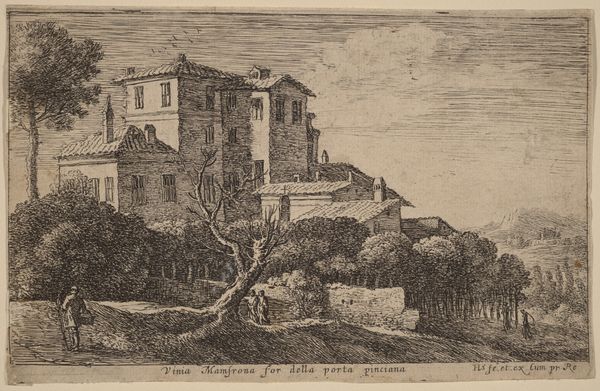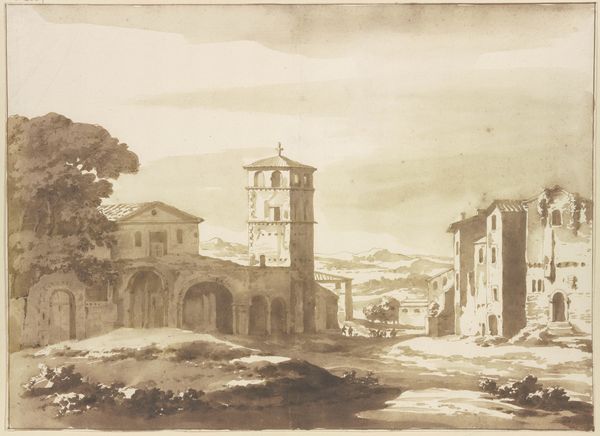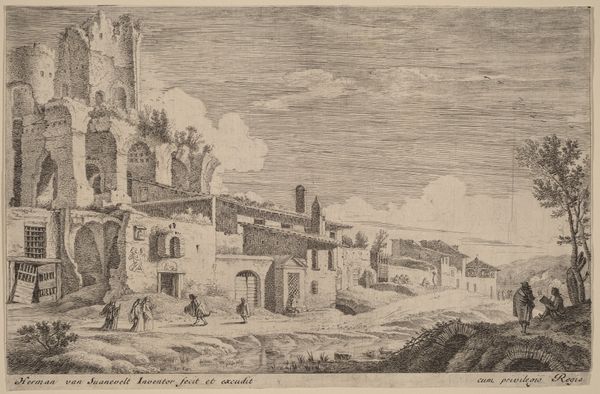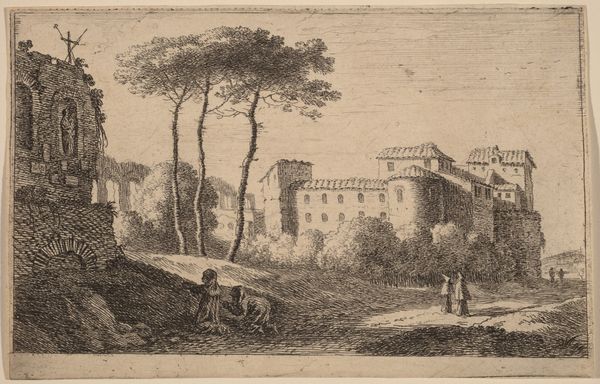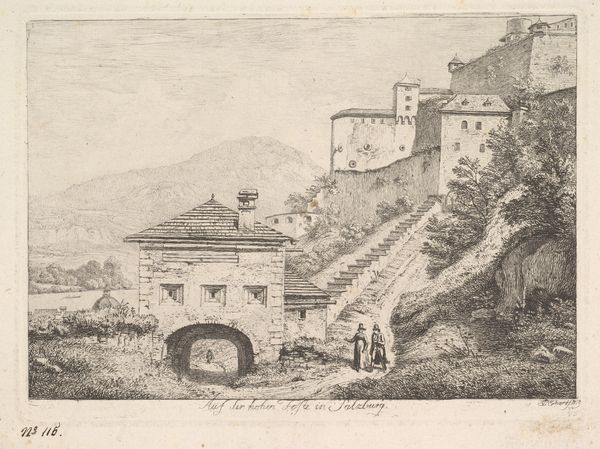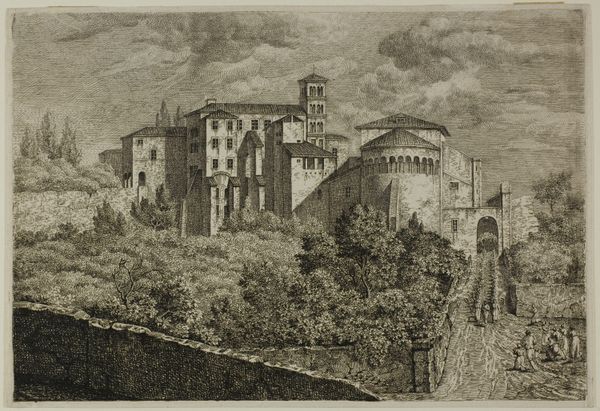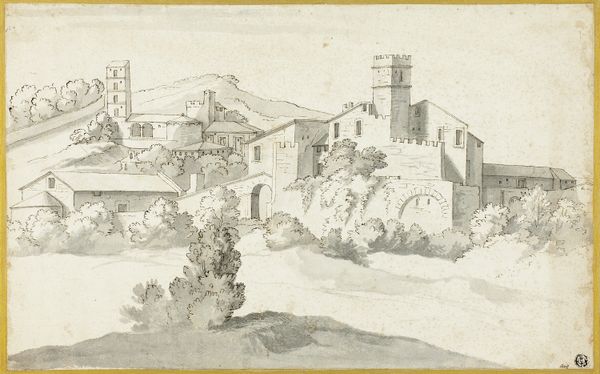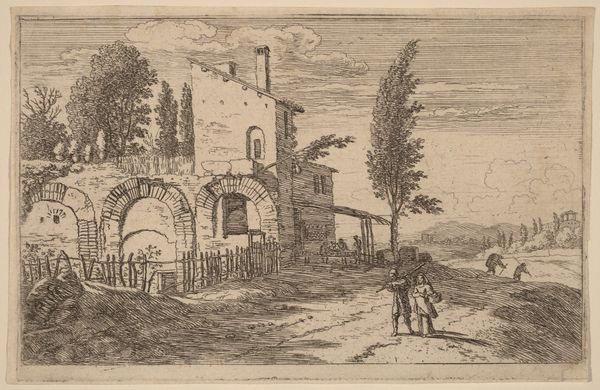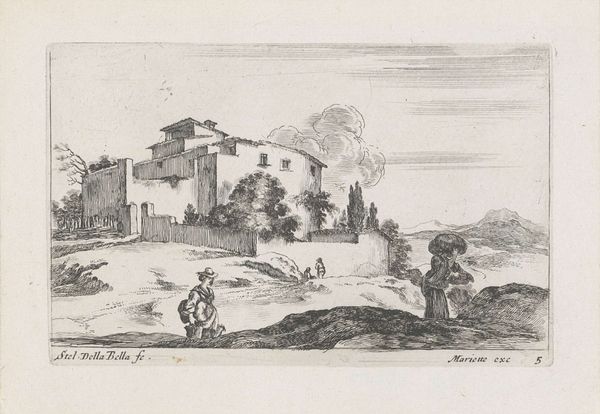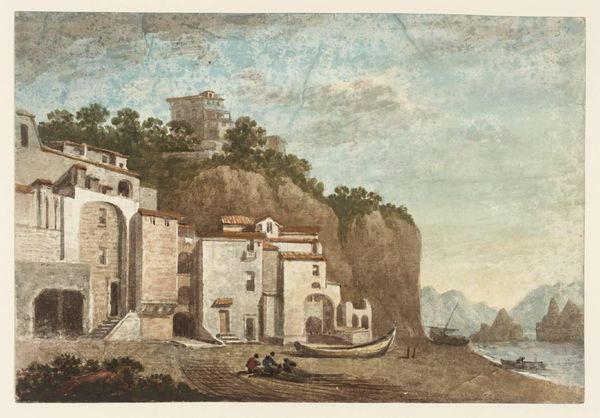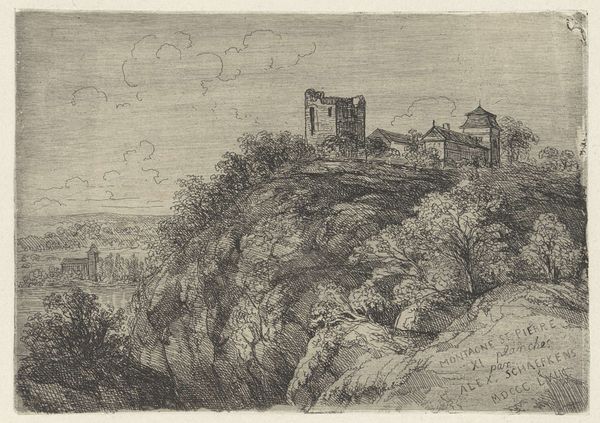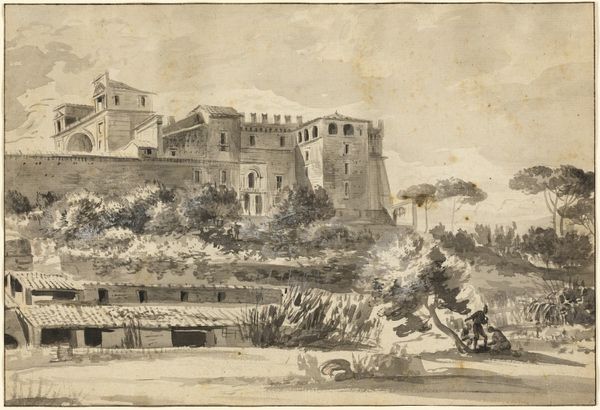
print, etching
#
baroque
# print
#
etching
#
old engraving style
#
landscape
Copyright: National Gallery of Art: CC0 1.0
Curator: Ah, here we have "Villa Outside the Porta Pia," an etching by Herman van Swanevelt. Its technique evokes a landscape reminiscent of the Baroque period. What strikes you about this scene? Editor: My first impression is one of decay. It has a quiet melancholy, doesn't it? The crumbling villa, set against the vastness of the landscape, speaks to the transience of human endeavor. Curator: The architecture definitely draws the eye, doesn't it? Note how the arches of the villa echo the curve of the distant hills, suggesting a connection, perhaps even a tension, between human construction and the natural world. In that time, classical structures served as reminders of past glory as well as future innovation. Editor: Precisely. These arches also appear to mirror ruins elsewhere, becoming a symbol for memory. Also the figures, so small in comparison to the villa, appear to be tourists, literally mapping the site into collective memory. It really makes you wonder about their perspective in encountering such relics. Curator: What are your thoughts on the composition, then? I'm particularly interested in the symbolism of the distant, round tower in view of the villa’s state of dilapidation. Is it meant to convey resilience, continuity? Editor: The distant tower could very well be symbolic, and it could represent timeless strength, a counterpoint to the villa's decay. Also I cannot help but be reminded of the etching style of the Baroque era as itself an echo from another time, further accentuating the cyclicality of ruins that you brought up earlier. Curator: That’s an excellent point about how medium carries its own temporal weight, especially the echoes from a visual tradition that consciously mirrored ancient Rome. In what ways, perhaps, does an artwork like this shape and reflect our cultural memory? Editor: The image and artwork serves as an elegiac reminder, shaping our contemporary perspective through its artistic recreation, its melancholic sensibility, urging viewers to consider their role in building a society of future pasts. Curator: It certainly offers us much to reflect on – from the symbols of human impermanence to our cultural impulse to record, remember, and make meaning of places of history. Editor: Yes, this image gives us much to unpack.
Comments
No comments
Be the first to comment and join the conversation on the ultimate creative platform.
